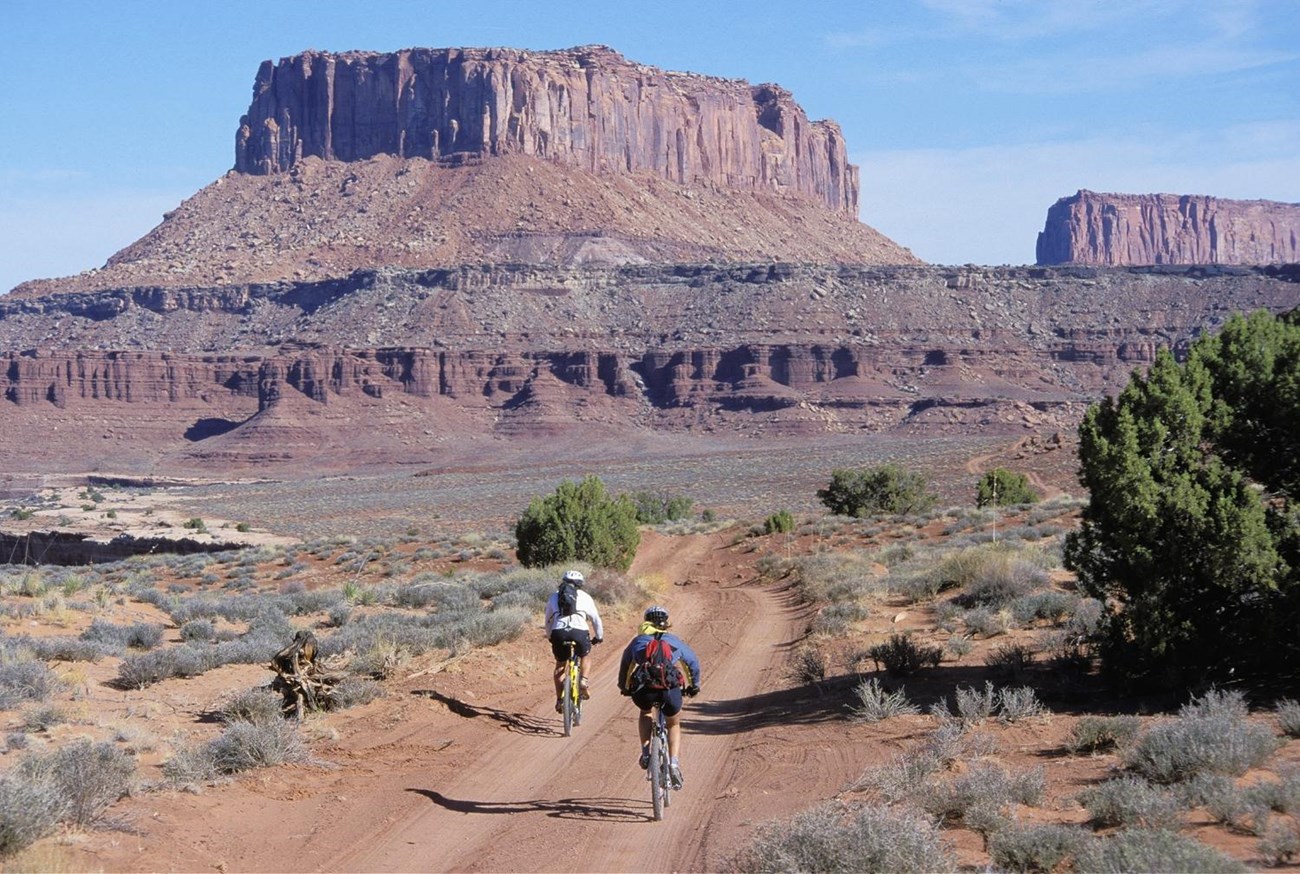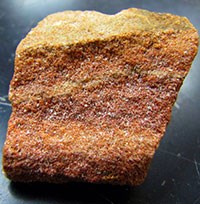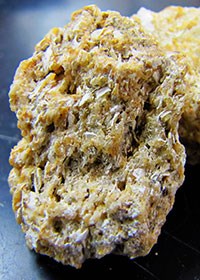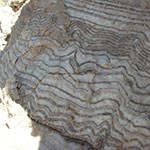
Introduction
Sedimentary rocks are formed from deposits of pre-existing rocks or pieces of once-living organism that accumulate on the Earth's surface. If sediment is buried deeply, it becomes compacted and cemented, forming sedimentary rock. These rocks often have distinctive layering or bedding and create many of the picturesque views of the desert southwest. Sedimentary rocks are classified into three groups: Clastic, Biologic, and Chemical.
Key Terms
-
Cementation: The process by which clastic sediments become lithified or consolidated into hard, compact rocks, usually through deposition or precipitation of minerals in the spaces among the individual grains of the sediment.
-
Compaction: The process of consolidating fine-grained sediments into rock.
-
Lithification: The conversion of loose sediment into solid sedimentary rock. Several processes, including compaction of grains, filling of spaces between grains with mineral cement, and crystallization act to solidify sediment.

Photo courtesy of Tina Kuhn
Clastic Sedimentary Rock
Clastic sedimentary rocks are made up of pieces (clasts) of pre-existing rocks loosened by weathering. These rocks have particles ranging in size from microscopic clay to huge boulders; their names are determined by the clast or grain size. The smallest grains are called clay, then silt, then sand. Grains larger than 2 millimeters are called pebbles. Some of the greatest examples of clastic sedimentary rock can be found at:
- Arches National Park, Utah [Geodiversity Atlas] [Park Home]
- Grand Canyon National Park, Arizona [Geodiversity Atlas] [Park Home]

Photo courtesy of Tina Kuhn
Biologic Sedimentary Rock
Biologic sedimentary rocks form when living organisms die, pile up, and are then compressed and cemented together. Types of biologic sedimentary rock include coal (accumulated plant material that is carbon-rich), or limestone and coquina (rocks made of marine organisms). Excellent examples of biologic sedimentary rock in national parks can be found at:
- Biscayne Bay National Park, Florida [Geodiversity Atlas] [Park Home]
- Guadalupe Mountains National Park, Texas [Geodiversity Atlas] [Park Home]

Photo courtesy of Heather Walborn
Chemical Sedimentary Rock
Chemical sedimentary rocks form by chemical precipitation that begins when water traveling through rock dissolves some of the minerals. These minerals are carried away from their source and eventually redeposited, or precipitated, when the water evaporates away. To view examples of chemical sedimentary rocks in the National Parks visit:
- Oregon Caves National Monument, Oregon [Geodiversity Atlas] [Park Home]
- Carlsbad Caverns National Park, New Mexico [Geodiversity Atlas] [Park Home]
- White Sands National Monument, New Mexico [Geodiversity Atlas] [Park Home]
Educational Resources
Related Links
Moab Happenings
- Geology Happenings—Geo-Hiking Moab: Trailside Geology of the Delicate Arch Trail
- Geology Happenings—The Entrada Sandstone: Beyond Slickrock
- Geology Happenings—Simply Slick Rock: Getting to Know Moab’s Entrada Sandstone
- Geology Happenings—The Moenkopi Formation: Red Beds and Ripple Rock
- Geology Happenings—The Kayenta Formation: Ancient Rivers and Modern Trails
- Geology Happenings—What’s in a Name? The Science Behind Rock Names
Last updated: July 8, 2024
